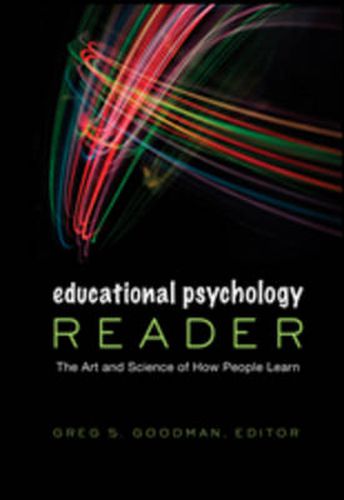Readings Newsletter
Become a Readings Member to make your shopping experience even easier.
Sign in or sign up for free!
You’re not far away from qualifying for FREE standard shipping within Australia
You’ve qualified for FREE standard shipping within Australia
The cart is loading…






Educational Psychology Reader: The Art and Science of How People Learn is a collage of educational psychology’s specializations and research-based reflections. As a discipline, educational psychology is reinventing itself from its early and almost exclusive identification with psychometrics and taxonomy-styled classifications to a dynamic and multicultural collection of conversations concerning language acquisition, socially mediated learning, diverse learning modalities, motivation, the affective domain, brain-based learning, the role of ecology in increasing achievement, and many other complimentary dimensions of how people learn. Many of the top names in the field are included in this volume, providing daunting evidence of the range and intellectual rigor of the field of educational psychology at this historic juncture. This book is ideal for adoption in a variety of undergraduate and graduate-level classrooms. It will also prove to be an invaluable reference book for library collections.
$9.00 standard shipping within Australia
FREE standard shipping within Australia for orders over $100.00
Express & International shipping calculated at checkout
Educational Psychology Reader: The Art and Science of How People Learn is a collage of educational psychology’s specializations and research-based reflections. As a discipline, educational psychology is reinventing itself from its early and almost exclusive identification with psychometrics and taxonomy-styled classifications to a dynamic and multicultural collection of conversations concerning language acquisition, socially mediated learning, diverse learning modalities, motivation, the affective domain, brain-based learning, the role of ecology in increasing achievement, and many other complimentary dimensions of how people learn. Many of the top names in the field are included in this volume, providing daunting evidence of the range and intellectual rigor of the field of educational psychology at this historic juncture. This book is ideal for adoption in a variety of undergraduate and graduate-level classrooms. It will also prove to be an invaluable reference book for library collections.